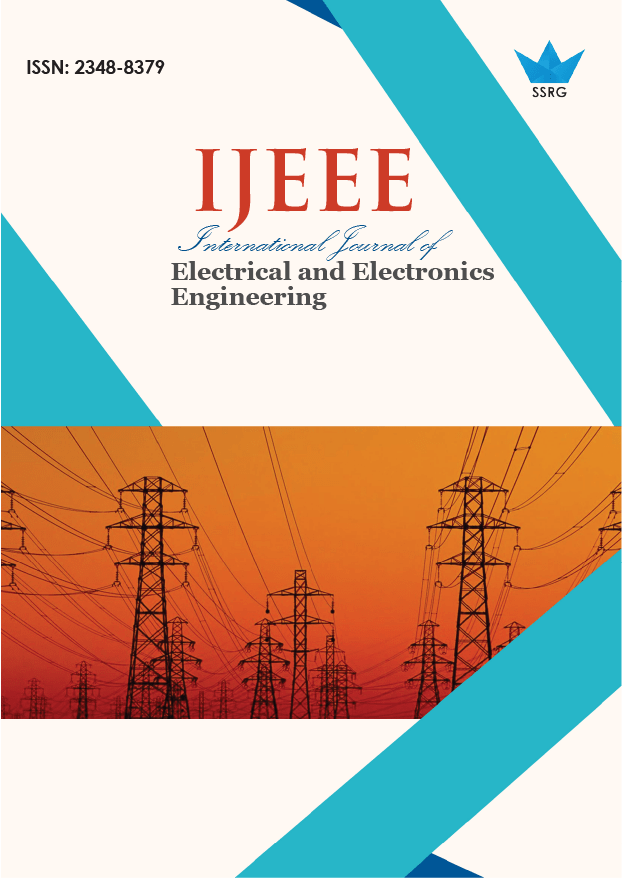Tension Sensorless Control For Web Transport Systems

| International Journal of Electrical and Electronics Engineering |
| © 2019 by SSRG - IJEEE Journal |
| Volume 6 Issue 10 |
| Year of Publication : 2019 |
| Authors : Tran Thi Hong Tham, Hoang Quoc Xuyen, Vo Quang Vinh |
How to Cite?
Tran Thi Hong Tham, Hoang Quoc Xuyen, Vo Quang Vinh, "Tension Sensorless Control For Web Transport Systems," SSRG International Journal of Electrical and Electronics Engineering, vol. 6, no. 10, pp. 9-14, 2019. Crossref, https://doi.org/10.14445/23488379/IJEEE-V6I10P101
Abstract:
A tension regulation control problem is presented in the paper. Different from other studies, the paper proposes a simple tension observer that can effectively replace tension measurement devices. Derived tension information is used for designing a control based on backstepping control design that is
integrated with sliding mode control for better robustness to system uncertainties and disturbances. The system performances with the designed control
show good tension tracking ability.
Keywords:
Roll-to-roll system, tension sensorless control, backstepping-sliding mode control, Lyapunov’s stability
References:
[1] K. Lin and M. Tsai, “Web tension control of a start-up process using observer techniques with friction and inertia compensation,” 2001. IECON’01. 27th Annu., vol. 00, no. C, 2001.
[2] Y. Hou, Z. Gao, F. Jiang, and B. T. Boulter, “Active disturbance rejection control for web tension regulation,” Proc. IEEE Conf. Decis. Control, vol. 5, no. December, pp. 4974–4979, 2001.
[3] R. V. Dwivedula and P. R. Pagilla, “Effect of backlash on web tension in roll-to-roll manufacturing systems: Mathematical model, mitigation method and experimental evaluation,” Proc. IEEE Int. Conf. Control Appl., pp. 1087–1092, 2013.
[4] T. Nishida, T. Sakamoto, and N. I. Giannoccaro, “Self-tuning PI control using adaptive PSO of a web transport system with overlapping decentralized control,” Electr. Eng. Japan (English Transl. Denki Gakkai Ronbunshi), vol. 184, no. 1, pp. 56–65, 2013.
[5] K. Okada and T. Sakamoto, “An Adaptive Fuzzy Control for Web Tension Control System,” Control Eng., pp. 1762–1767, 1998.
[6] S. Liu, X. Mei, F. Kong, and K. He, “A decoupling control
algorithm for unwinding tension system based on active disturbance rejection control,” Math. Probl. Eng., vol. 2013, 2013.
[7] S. H. Liu, X. S. Mei, F. F. Kong, and K. He, “A Decoupling Control Algorithm for Unwinding Tension System Based on Active Disturbance Rejection Control,” Math. Probl. Eng., vol. 2013, 2013.
[8] J. Askari, J. Soltani, G. R. Arab Markadeh, and N. R. Abjadi, “Nonlinear sliding-mode control of a multi-motor web-winding system without tension sensor,” IET Control Theory Appl., vol. 3, no. 4, pp. 419–427, 2009.
[9] C. L. Chen, K. M. Chang, and C. M. Chang, “Modeling and control of a web-fed machine,” Appl. Math. Model., vol. 28, no. 10, pp. 863–876, 2004.
[10] T. T. Tran and K. H. Choi, “A backstepping-based control algorithm for multi-span roll-to-roll web system,” Int. J. Adv. Manuf. Technol., vol. 70, no. 1–4, pp. 45–61, 2014.
[11] K. H. Choi, T. T. Thanh, and D. S. Kim, “A precise control algorithm for single-span roll-to-roll web system using the back-stepping controller,” IEEE Int. Symp. Ind. Electron., no. ISlE, pp. 1709–1714, 2009.
[12] F. Mokhtari and P. Sicard, “Decentralized control design using Integrator Backstepping for controlling web winding systems,” IECON Proc. (Industrial Electron. Conf., pp. 3451–3456, 2013.

 10.14445/23488379/IJEEE-V6I10P101
10.14445/23488379/IJEEE-V6I10P101